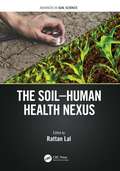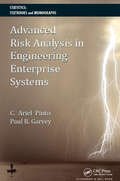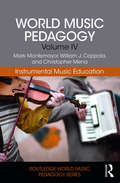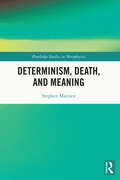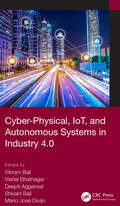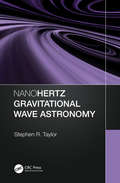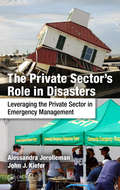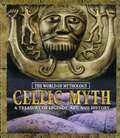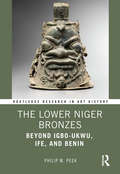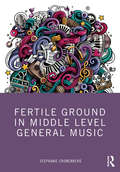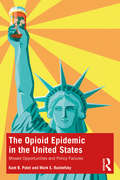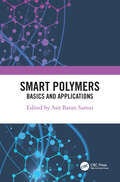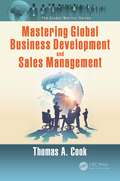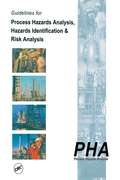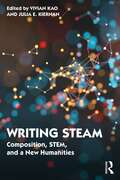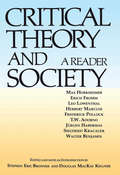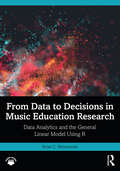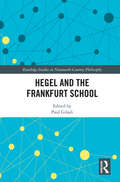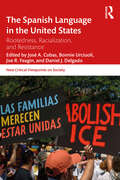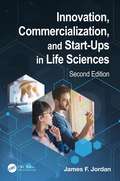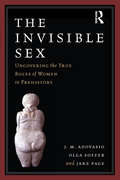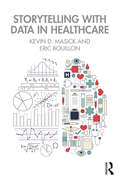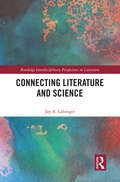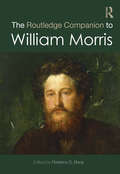- Table View
- List View
The Soil-Human Health-Nexus (ISSN)
by Rattan LalThe term "soil health" refers to the functionality of a soil as a living ecosystem capable of sustaining plants, animals, and humans while also improving the environment. In addition to soil health, the environment also comprises the quality of air, water, vegetation, and biota. The health of soil, plants, animals, people, and the environment is an indivisible continuum. One of the notable ramifications of the Anthropocene is the growing risks of decline in soil health by anthropogenic activities. Important among these activities are deforestation, biomass burning, excessive soil tillage, indiscriminate use of agrochemicals, excessive irrigation by flooding or inundation, and extractive farming practices. Soil pollution, by industrial effluents and urban waste adversely impacts human health. Degradation of soil health impacts nutritional quality of food, such as the uptake of heavy metals or deficit of essential micro-nutrients, and contamination by pests and pathogens. Indirectly, soil health may impact human health through contamination of water and pollution of air.This book aims to:Present relationships of soil health to human health and soil health to human nutrition. Discuss the nexus between soil degradation and malnourishment as well as the important links between soil, plant, animal and human health. Detail reasons oil is a cause of infectious diseases and source of remedial measures.Part of the Advances in Soil Sciences series, this informative volume covering various aspects of soil health appeals to soil scientists, environmental scientists and public health workers.
Advanced Risk Analysis in Engineering Enterprise Systems (Statistics: A Series of Textbooks and Monographs)
by Cesar Ariel Pinto Paul R. GarveySince the emerging discipline of engineering enterprise systems extends traditional systems engineering to develop webs of systems and systems-of-systems, the engineering management and management science communities need new approaches for analyzing and managing risk in engineering enterprise systems. Advanced Risk Analysis in Engineering Enterpri
World Music Pedagogy, Volume IV: Teaching World Music In Higher Education (Routledge World Music Pedagogy Series)
by Mark Montemayor William Coppola Christopher MenaWorld Music Pedagogy, Volume IV: Instrumental Music Education provides the perspectives and resources to help music educators craft world-inclusive instrumental music programs in their teaching practices. Given that school instrumental music programs—concert bands, symphony orchestras, and related ensembles—have borne musical traditions that broadly reflect Western art music and military bands, instructors are often educated within the European conservatory framework. Yet a culturally diverse and inclusive music pedagogy can enrich, expand, and transform these instrumental music programs to great effect.Drawing from years of experience as practicing music educators and band and orchestra leaders, the authors present a vision characterized by both real-world applicability and a great depth of perspective. Lesson plans, rehearsal strategies, and vignettes from practicing teachers constitute valuable resources. With carefully tuned ears to intellectual currents throughout the broader music education community, World Music Pedagogy, Volume IV provides readers with practical approaches and strategies for creating world-inclusive instrumental music programs.
Determinism, Death, and Meaning (Routledge Studies in Metaphysics)
by Stephen MaitzenThis book offers new arguments for determinism. It draws novel and surprising consequences from determinism for our attitudes toward such things as death, regret, grief, and the meaning of life.The book argues that rationalism is the right attitude to take toward reality. It then shows that rationalism implies determinism and that determinism has surprising and far-reaching consequences. The author contends that the existence of all of humanity almost certainly depends on the precise time and manner of your death and mine; that purely retrospective regret, relief, gratitude, and grief are irrational for all but those who hold extreme values; and that everyone’s life has an unending impact on the future and thereby achieves the strongest kind of meaning that it makes sense to desire. Written in a direct and accessible style, Determinism, Death, and Meaning will be of interest to researchers and advanced students working in metaphysics, philosophy of religion, and value theory, as well as general readers with a serious interest in these topics.
Cyber-Physical, IoT, and Autonomous Systems in Industry 4.0
by Vikram Bali Vishal Bhatnagar Deepti Aggarwal Shivani Bali Mario José DivánThis book addresses topics related to the Internet of Things (IoT), machine learning, cyber-physical systems, cloud computing, and autonomous vehicles in Industry 4.0. It investigates challenges across multiple sectors and industries and considers Industry 4.0 for operations research and supply chain management.Cyber-Physical, IoT, and Autonomous Systems in Industry 4.0 encourages readers to develop novel theories and enrich their knowledge to foster sustainability. It examines the recent research trends and the future of cyber-physical systems, IoT, and autonomous systems as they relate to Industry 4.0. This book is intended for undergraduates, postgraduates, academics, researchers, and industry individuals to explore new ideas, techniques, and tools related to Industry 4.0.
Nanohertz Gravitational Wave Astronomy
by Stephen R. TaylorNanohertz Gravitational Wave Astronomy explores the exciting hunt for low frequency gravitational waves by using the extraordinary timing precision of pulsars. The book takes the reader on a tour across the expansive gravitational-wave landscape, from LIGO detections to the search for polarization patterns in the Cosmic Microwave Background, then hones in on the band of nanohertz frequencies that Pulsar Timing Arrays (PTAs) are sensitive to. Within this band may lie many pairs of the most massive black holes in the entire Universe, all radiating in chorus to produce a background of gravitational waves. The book shows how such extra-Galactic gravitational waves can alter the arrival times of radio pulses emanating from monitored Galactic pulsars, and how we can use the pattern of correlated timing deviations from many pulsars to tease out the elusive signal. The book takes a pragmatic approach to data analysis, explaining how it is performed in practice within classical and Bayesian statistics, as well as the numerous strategies one can use to optimize numerical Bayesian searches in PTA analyses. It closes with a complete discussion of the data model for nanohertz gravitational wave searches, and an overview of the past achievements, present efforts, and future prospects for PTAs.The book is accessible to upper division undergraduate students and graduate students of astronomy, and also serves as a useful desk reference for experts in the field. Key features: Contains a complete derivation of the pulsar timing response to gravitational waves, and the overlap reduction function for PTAs. Presents a comprehensive overview of source astrophysics, and the dynamical influences that shape the gravitational wave signals that PTAs are sensitive to. Serves as a detailed primer on gravitational-wave data analysis and numerical Bayesian techniques for PTAs.
The Private Sector's Role in Disasters: Leveraging the Private Sector in Emergency Management
by Alessandra Jerolleman John J. KieferThis book examines the role of the private sector in emergency management and how that role is changing through private sector intersections with government, government agencies, and the public sectors in all phases of emergency management. It particularly focuses on the areas in which government regulations and guidelines promote or encourage priv
Celtic Myth: A Treasury of Legends, Art, and History (The\world Of Mythology Ser.)
by James HarpurCeltic Myth: A Treasury of Legends, Art, and History
The Lower Niger Bronzes: Beyond Igbo-Ukwu, Ife, and Benin (Routledge Research in Art History)
by Philip M. PeekThis book demonstrates that copper-alloy casting was widespread in southern Nigeria and has been practiced for at least a millennium. Philip M. Peek’s research provides a critical context for the better-known casting traditions of Igbo-Ukwu, Ife, and Benin. Both the necessary ores and casting skills were widely available, contrary to previous scholarly assumptions. The majority of the Lower Niger Bronzes, which we know number in the thousands, are of subjects not found elsewhere, such as leopard skull replicas, grotesque bell heads, ritual objects, and humanoid figures. Important puzzle pieces are now in place to permit a more complete reconstruction of southern Nigerian history. The book will be of interest to scholars working in art history, African studies, African history, and anthropology.
Fertile Ground in Middle Level General Music
by Stephanie CronenbergFertile Ground in Middle Level General Music guides music educators to inspire their middle level students (grades 5–8) to engage more deeply in the general music classroom, where students are given the opportunity to "try on" a range of roles: musician, composer, listener, and critic. The book outlines the Fertile Ground Framework, a teacher's aide for curricular decision-making that unites the middle level concept with the National Core Arts Standards while emphasizing the developmental needs and cultural identities of students. This resource-rich book provides teachers with an array of adaptable classroom support tools, including: Lesson sequences Activity ideas Teacher resources and worksheets "Do-Now" exercises Featuring the real-world perspectives of thirteen music educators, Fertile Ground in Middle Level General Music is both practical and theoretical, presenting methods for creating rich, inspiring learning environments in middle level general music classrooms of all shapes and sizes, and highlighting the unacknowledged strengths that already exist therein. Focused on the aim of motivating students to pursue lifelong music learning, this book helps instructors find joy and excitement in teaching a wide array of musical topics to diverse groups of middle level music students.
The Lower Niger Bronzes: Beyond Igbo-Ukwu, Ife, and Benin (Routledge Research in Art History)
by Philip M. PeekThis book demonstrates that copper-alloy casting was widespread in southern Nigeria and has been practiced for at least a millennium. Philip M. Peek’s research provides a critical context for the better-known casting traditions of Igbo-Ukwu, Ife, and Benin. Both the necessary ores and casting skills were widely available, contrary to previous scholarly assumptions. The majority of the Lower Niger Bronzes, which we know number in the thousands, are of subjects not found elsewhere, such as leopard skull replicas, grotesque bell heads, ritual objects, and humanoid figures. Important puzzle pieces are now in place to permit a more complete reconstruction of southern Nigerian history. The book will be of interest to scholars working in art history, African studies, African history, and anthropology.
The Opioid Epidemic in the United States: Missed Opportunities and Policy Failures
by Kant B. Patel Mark E. RushefskyThe current opioid epidemic in the United States began in the mid-1990s with the introduction of a new drug, OxyContin, viewed as a safer and more effective opiate for chronic pain management. By 2017, the opioid epidemic had become a full-blown crisis as over two million Americans had become dependent on and abused prescription pain pills and street drugs.This book examines the origins, development, and rise of the opioid epidemic in the United States from the perspective of the public policy process. The authors, political scientists Kant Patel and Mark Rushefsky, discuss institutional features of the American political system that impact the making of public policy, arguing that the fragmentation of that system hinders the ability to coherently address policy problems, taking the opioid epidemic as an example. The book begins with a brief historical examination of the history of the problem of opioid addiction and crises in the United States and public policy responses to past crises, but the main focus is on the current national public health emergency. The book analyzes the following: The origins of the current crisis Indicators and warning signs pointing to the emergence of a significant public problem Factors that contributed to the opioid crisis Why the crisis emerged in the United States and not in other Western countries The nature and scope of the opioid crisis, including socioeconomic and demographic characteristics and the human, social, and economic costs Presidential administrations’ public response, and nonresponse, to the opioid crisis Parallels between the role played by opioid manufacturers and tobacco/cigarette manufacturers in creating the problem of addiction, resulting in high mortality rates, and the public policy response to both This book explores the national policy response to the opioid crisis, as well as state and local government responses and separation of powers, including how the three branches of government deal with the opioid problem. The authors conclude with a discussion of how accurate problem definition, problem diagnosis, and appropriate and timely responses could have produced a more appropriate and robust policy response—policy process tools that will be essential in fighting both the current crisis and the next one. The Opioid Epidemic in the United States is essential reading for policy analysis courses in political science, health, and social work programs, as well as for United States policymakers at the local, state, and national levels.
Smart Polymers: Basics and Applications
by Asit Baran SamuiSmart materials have been produced by conceiving of the idea of materials/systems having a fourth dimension. To match advances in instrumentation, efforts are being made to develop materials, resulting in smart materials with enhanced performance. In nature, the action of stimuli-responsive materials is reversible; this idea has attracted interest for its potential research and industrial applications. The challenge remains how to couple these applications with environmental consciousness.This book presents the basics of smart polymers and describes their current and future applications. This book is different from other books on the subject in that it explores polymer materials’ smart behavior in more depth, covering vibration damping, thermal and electrochemical energy, sensing at trace level, biotechnology, and so on. The 14 chapters in this book cover diverse areas, including:• Photoresponsive polymers that can be manipulated using a specific frequency of light• Designing polymers for vibration damping• Smart manipulations of hydrophobic and super-hydrophobic polymers• Biopolymers, including hydrogels for smart application, drug delivery, and other uses• Smart paints• Self-healing and shape memory polymers• Holography for data storage• Phase change polymers and solid polymer electrolytes for thermal and electrochemical energy• Molecular imprinting polymers for sub-ppm sensing and removal of unwanted materials• Smart textiles, and the concept of advanced textilesThis book will be of particular interest to researchers, postgraduates, and industry experts. It offers an extensive introduction to the basics of smart polymers and their possible applications.
Mastering Global Business Development and Sales Management (The Global Warrior Series)
by Thomas A. CookMastering Global Business Development and Sales Management focuses on the importance of companies and executives recognizing that their organization is sales driven, and that there is a definite pronounced connection between sales and all other aspects of how a company operates. It details the sales manager's role in developing sales personnel, delivering new business to the organization, and otherwise becoming a driving force for the overall prosperity of the company. This book differentiates itself by providing the essence of international sales management. Shows how to develop a marketing and sales strategy for globalization Details regional versus country-specific profiles Explains what all sales personnel need to know about export trade compliance, logistics, and supply chain operations Provides sales and negotiation skill sets
Guidelines for Process Hazards Analysis (PHA, HAZOP), Hazards Identification, and Risk Analysis
by Nigel HyattThis unique manual is a comprehensive, easy-to-read overview of hazards analysis as it applies to the process and allied industries. The book begins by building a background in the technical definition of risk, past industrial incidents and their impacts, ensuing legislation, and the language and terms of the risk field. It addresses the different types of structured analytical techniques for conducting Process Hazards Analyses (PHA), provides a "What If" checklist, and shows how to organize and set up PHA sessions. Other topics include layout and siting considerations, Failure Modes and Effect Analysis (FMEA), human factors, loss of containment, and PHA team leadership issues.
Writing STEAM: Composition, STEM, and a New Humanities
by Vivian KaoThis edited collection positions writing at the center of interdisciplinary higher education, and explores how writing instruction, writing scholarship, and writing program administration bring STEM and the humanities together in meaningful, creative, and beneficial ways.Writing professionals are at the forefront of a cross-pollination between STEM (Science, Technology, Engineering, and Mathematics) and the arts and humanities. In their work as educators, scholars, and administrators, they collaborate with colleagues in engineering, scientific, technical, and health disciplines, offer new degree programs that allow students to bring the humanities to bear on design experiments, and build an academic culture that promotes a vision of the humanities in the twenty-first century, as well as a vision of technology that is decidedly human. This collection surveys and promotes that work through chapters focused on writing instruction, writing scholarship, and writing program administration, covering topics that include data-driven writing courses, public science communication, non-traditional college students, creative writing, gamification, skills transfer, and Writing Across the Curriculum programs. Writing STEAM will be essential reading for scholars, instructors, and administrators in writing studies, rhetoric and composition, STEM, and a variety of interdisciplinary programs; it will aid in teacher training for both humanities and STEM courses focused on writing and communication.
Critical Theory and Society: A Reader
by Stephen Eric BronnerA collection of seminal essays, many appearing in English for the first time, which provides an excellent overview of the critical theory developed by the Frankfurt School.
From Data to Decisions in Music Education Research: Data Analytics and the General Linear Model Using R
by Brian C. WesolowskiFrom Data to Decisions in Music Education Research provides a structured and hands-on approach to working with empirical data in the context of music education research. Using step-by-step tutorials with in-depth examples of music education data, this book draws upon concepts in data science and statistics to provide a comprehensive framework for working with a variety of data and solving data-driven problems.All of the skills presented here use the R programming language, a free, open-source statistical computing and graphics environment. Using R enables readers to refine their computational thinking abilities and data literacy skills while facilitating reproducibility, replication, and transparency of data analysis in the field. The book offers: A clear and comprehensive framework for thinking about data analysis processes in a music education context. An overview of common data structures and data types used in statistical programming and data analytics. Techniques for cleaning, preprocessing, manipulating, aggregating, and mining data in ways that facilitate organization and interpretation. Methods for summarizing and visualizing data to help identify structures, patterns, and trends within data sets. Detailed applications of descriptive, diagnostic, and predictive analytics processes. Step-by-step code for all concepts and analyses. Direct access to all data sets and R script files through the accompanying eResource. From Data to Decisions in Music Education Research offers a reference "cookbook" of code and programming recipes written with the graduate music education student in mind and breaks down data analysis processes and skills in an approachable fashion. It can be used across a wide range of graduate music education courses that rely on the application of empirical data analyses and will be useful to all music education scholars and professionals seeking to enhance their use of quantitative data.
Hegel and the Frankfurt School (Routledge Studies in Nineteenth-Century Philosophy)
by Paul GiladiThis collection of original essays discusses the relationship between Hegel and the Frankfurt School Critical Theory tradition. The book’s aim is to take stock of this fascinating, complex, and complicated relationship. The volume is divided into five parts: Part I focuses on dialectics and antagonisms. Part II is concerned with ethical life and intersubjectivity. Part III is devoted to the logico-metaphysical discourse surrounding emancipation. Part IV analyses social freedom in relation to emancipation. Part V discusses classical and contemporary political philosophy in relation to Hegel and the Frankfurt School, as well as radical-democratic models and the outline and functions of economic institutions.
The Spanish Language in the United States: Rootedness, Racialization, and Resistance (New Critical Viewpoints on Society)
by José A. CobasThe Spanish Language in the United States addresses the rootedness of Spanish in the United States, its racialization, and Spanish speakers’ resistance against racialization. This novel approach challenges the "foreigner" status of Spanish and shows that racialization victims do not take their oppression meekly. It traces the rootedness of Spanish since the 1500s, when the Spanish empire began the settlement of the new land, till today, when 39 million U.S. Latinos speak Spanish at home. Authors show how whites categorize Spanish speaking in ways that denigrate the non-standard language habits of Spanish speakers—including in schools—highlighting ways of overcoming racism.
Innovation, Commercialization, and Start-Ups in Life Sciences
by James F. JordanInnovation is a translation of a new method, idea, or product into reality and profit. It is a process of connected steps that accumulates into a brand reputation required for success. Unlike Fortune 500 companies, whose projects are self-funded, a start-up must simultaneously have a value proposition that attracts a customer (for revenue), investors (for capital), and acquirers (for a liquidity event or IPO). A high percentage of start-ups fail before attaining positive cashflow, due to a variety of reasons that are detailed in this book.Avoiding the pitfalls and wrong turns are the goals of this book. Innovation, Commercialization, and Start-Ups in Life Sciences details the methodologies necessary to create a successful life science start-up from initiation to exit. Written by an expert who has worked with more nearly 500 life science start-ups, this book discusses specific processes and investor milestones that must be navigated to align customer, funder, and acquirer needs. Successful commercialization requires attention to multiple constituents, such as investors, regulators, and customers. Investors require liquidity for their return, which is achieved through selling their stock in a public or private sale. The reader will gain an appreciation for the necessary data, partnerships, and skills needed to create a competitive and sustainable company. The author discusses such specific issues as customer problems, demonstrating sales access, and ensuring intellectual property is impervious to competitive advancement. This book is intended to be suitable for entrepreneurs, venture capitalists, and investors in both business and academic settings. These organizations have specific departments, such as R&D, operations, business development, legal, regulatory, and marketing, that would also benefit from this book.FEATURES Focuses specifically on life science start-ups Examines how to determine a company valuation and future "fundable milestones" Explores how to align regulatory and clinical strategies Discusses intellectual property derived from a university or individual through formation to exit. Reviews how start‐ups must simultaneously meet the needs of multiple constituencies at once: investors, regulators, customers and exit candidates James F. Jordan is an author, consultant, and speaker. He is a Distinguished Service Professor of Healthcare & Biotechnology Management, a former Fortune 100 executive, and a managing director of a venture fund.Access the Support Material: https://healthcaredata.center/ Cover design by Sarah Mailhott.
The Invisible Sex: Uncovering the True Roles of Women in Prehistory
by J. M. Adovasio Olga Soffer Jake PageShaped by cartoons and museum dioramas, our vision of Paleolithic times tends to feature fur-clad male hunters fearlessly attacking mammoths while timid women hover fearfully behind a boulder. Recent archaeological research has shown that this vision bears little relation to reality. J. M. Adovasio and Olga Soffer, two of the world's leading experts on perishable artifacts such as basketry, cordage, and weaving, present an exciting new look at prehistory. With science writer Jake Page, they argue that women invented all kinds of critical materials, including the clothing necessary for life in colder climates, the ropes used to make rafts that enabled long-distance travel by water, and nets used for communal hunting. Even more important, women played a central role in the development of language and social life—in short, in our becoming human. In this eye-opening book, a new story about women in prehistory emerges with provocative implications for our assumptions about gender today.
Storytelling with Data in Healthcare
by Kevin Masick Eric BouillonWith the constant evolution of change in healthcare from both a technology and governmental perspective, it is imperative to take a step back and view the big picture. Relying on hunches or beliefs is no longer sustainable, so avoid jumping to conclusions and making decisions without thoroughly understanding the statistics being analyzed. The triple aim of statistics is a conceptual model laying the foundation for improving healthcare outcomes through statistics. This foundation is: know your numbers; develop behavioral interventions; and set goals to drive change.With the availability of electronic data sources, the quantity and quality of data have grown exponentially to the point of information overload. Translating all this data into words that tell a meaningful story is overwhelming. This book takes the reader on a journey that navigates through this data to tell a story that everyone can understand and use to drive improvement. Readers will learn to tell a narrative story based on data, to develop creative, innovative and effective solutions to improve processes and outcomes utilizing the authors’ tools. Topics include mortality and readmission, patient experience, patient safety survey, governmental initiatives, CMS Star Rating and Hospital Compare.Storytelling with Data in Healthcare combines methodology and statistics in the same course material, making it coherent and easier to put into practice. It uses storytelling as a tool for knowledge acquisition and retention and will be valuable for courses in nursing schools, medical schools, pharmacy schools or any healthcare profession that has a research design or statistics course offered to students. The book will be of interest to researchers, academics, healthcare professionals, and students in the fields of healthcare management and operations as well as statistics and data visualization.
Connecting Literature and Science (Routledge Interdisciplinary Perspectives on Literature)
by Jay A. LabingerThis book presents a case for engagement between the sciences and the humanities. The author, a professional chemist, seeks to demonstrate that the connections between those fields of intellectual activity are far more significant than anything that separates them. The book combines a historical survey of the relationships between science and literature with a number of case studies that examine specific scientific episodes—several drawn from the author’s own research—juxtaposed with a variety of literary works spanning a wide range of period and genre—Dante to detective fiction, War and Peace to White Teeth—to elicit their common themes. The work argues for an empirical, non-theory-based approach, one that is closely analogous to connectionist models of brain development and function, and that can appeal to general readers, as well as to literary scholars and practicing scientists, who are open to the idea that literature and science should not be compartmentalized.
The Routledge Companion to William Morris (Routledge Art History and Visual Studies Companions)
by Florence S. BoosWilliam Morris (1834–96) was an English poet, decorative artist, translator, romance writer, book designer, preservationist, socialist theorist, and political activist, whose admirers have been drawn to the sheer intensity of his artistic endeavors and efforts to live up to radical ideals of social justice. This Companion draws together historical and critical responses to the impressive range of Morris’s multi-faceted life and activities: his homes, travels, family, business practices, decorative artwork, poetry, fantasy romances, translations, political activism, eco-socialism, and book collecting and design. Each chapter provides valuable historical and literary background information, reviews relevant opinions on its subject from the late-nineteenth century to the present, and offers new approaches to important aspects of its topic. Morris’s eclectic methodology and the perennial relevance of his insights and practice make this an essential handbook for those interested in art history, poetry, translation, literature, book design, environmentalism, political activism, and Victorian and utopian studies.
